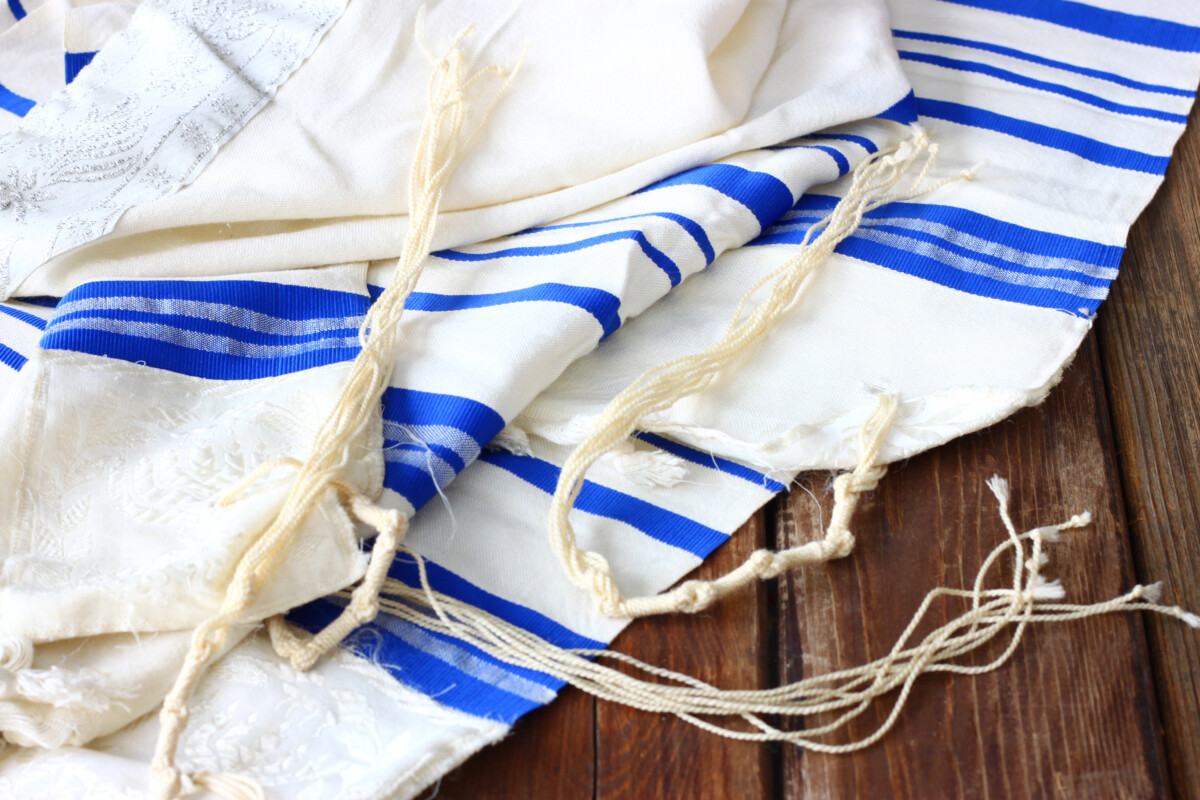
A Tallit Trend Alert: Fashion Meets Faith
By Drew Kramer
When a tween is called to the Torah for a B’nei Mitzvah, the occasion marks the transition from childhood to adulthood. From this moment forward, the child is considered of age to read from the torah, participate in a minyan and atone for his or her own actions. In some sects of Judaism, the B’nei Mitzvah includes the presentation of the tallit gadol, a fringed fabric worn as a prayer shawl over one’s clothes during morning prayers and throughout Yom Kippur services. The twined and knotted fringe, known as tzitzit, is attached to the shaul’s four corners. It is typically made from wool or cotton, and occasionally silk.
Psst…How to Hora at your Child’s B’nei Mitzvah
The history of the garment begins in the Bible, descending from a commandment that Jewish people attach tzitzit to the corners of four cornered garments every day to serve as a reminder of their covenant with God. As fashion trends changed from the days of Moses and Aaron, so too did the tradition. When four cornered garments ceased to be the daily costume, Jews wore a poncho-like vest, called a tallit katan, underneath their clothes to satisfy the commitment to this commandment. Today, some Orthodox Jews uphold this tradition, while more secular people embrace the shawl for prayer services. Different sects of Judaism have different views on whether women should wear tallit, but among American Reform Jews, the presentation of the first tallit is par for course.
While fashion trends come and go, the tallit remains a fixture in the spiritual life for Jewish people. Although the basic structure of the prayer shawl remains the same, like other garments, it does evolve with the passage of time. Cantor Amanda Kleinman of Westchester Reform Temple weighs in on what is en vogue for today’s tweens approaching B’nei Mitzvah:
- Value Israel: Some families choose to connect the milestone with their commitment to Israel. To encourage a lifelong relationship with the Jewish homeland, some family members will buy a tallit on a family trip to Israel, or will ask a family member or friend to bring one home for them.
- Support a Cause: The purchase of a tallit can be a chance to support important causes. For example, proceeds from the Women of the Wall tallit help fund the Israeli group that advocates for equal rights of women to pray and chant Torah at the Western Wall in Jerusalem. The tallit becomes a way to contribute to the cause, but also a statement of values for a more inclusive society.
- Honor Ancestors: Passing down a tallit is an opportunity to connect with relatives that are no longer with us. By selecting an ancestral tallit, the family connects the future to the past, honoring their memory, as well as the commitment and sacrifices made for Jewish life.
- Personalize your style: While fashion and religion don’t always feel inherently connected, Judaism supports enhancement or beautification of a commandment through its concept called Hiddur Mitzvah. Hiddur Mitzvah means that Jews must do all we can to make the fulfillment of commandments and performance of Jewish rituals as beautiful and special as possible. Choosing a tallit that is visually pleasing to its owner
Whether you are choosing a tallit that is visually stunning to the eye of the beholder or stands for a larger commitment to cause and community, the garment is personal. Like clothes carefully selected to enhance and honor the body, the tallit is a visual symbol of the wearer’s choice to be Jewish. The history and meaning behind the tallit will grow with the individual, wrapping the wearer in the warmth, and love of tradition through the highs and lows of life.





